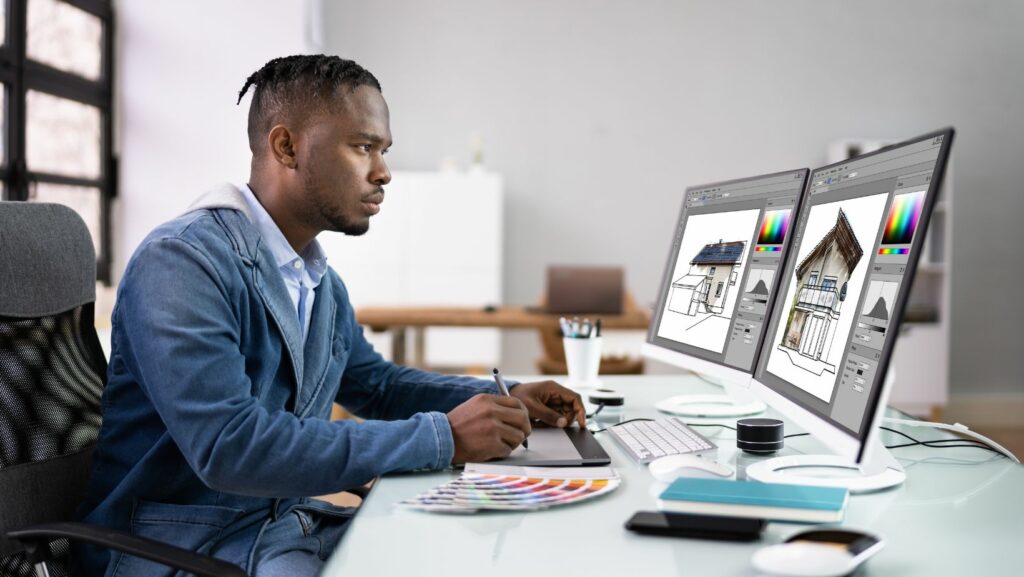 When it comes to creating visually appealing and user-friendly websites, web graphic design plays a crucial role. It’s the art of combining elements like images, colors, and typography to communicate ideas effectively. In today’s digital age, having a well-designed website is essential for businesses looking to make a strong online presence.
When it comes to creating visually appealing and user-friendly websites, web graphic design plays a crucial role. It’s the art of combining elements like images, colors, and typography to communicate ideas effectively. In today’s digital age, having a well-designed website is essential for businesses looking to make a strong online presence.
Web graphic design involves not just making a website look good, but also ensuring that it functions seamlessly across different devices and screen sizes. By incorporating elements like responsive design and intuitive navigation, designers can enhance the user experience and drive engagement.
Whether it’s crafting a stunning homepage or designing captivating visuals for social media, mastering the principles of web graphic design is key to standing out in the competitive online landscape. Stay tuned to explore the latest trends and techniques in web graphic design to elevate your digital presence.
Web Graphic Design
 Web graphic design has become an indispensable aspect of online presence, shaping the visual appeal and functionality of websites. By integrating images, colors, and typography, designers can effectively convey ideas in today’s digital landscape. The focus extends beyond aesthetics to incorporate responsive design and user-friendly navigation, ensuring a seamless experience across diverse devices.
Web graphic design has become an indispensable aspect of online presence, shaping the visual appeal and functionality of websites. By integrating images, colors, and typography, designers can effectively convey ideas in today’s digital landscape. The focus extends beyond aesthetics to incorporate responsive design and user-friendly navigation, ensuring a seamless experience across diverse devices.
Web graphics have evolved significantly over the years, adapting to technological advancements and design trends. From simple pixelated images to high-definition graphics and animations, the evolution reflects the dynamic nature of digital creativity. Designers now harness advanced tools and techniques to elevate the user experience through visually striking elements.
Design principles form the foundation of effective web graphic design, guiding designers in creating captivating and functional websites. Consistency in layout, color schemes, and typography enhances brand recognition and user engagement. Additionally, prioritizing user experience through intuitive navigation and mobile responsiveness is paramount in modern web design practices.
Tools and Software for Web Graphic Design
Web graphic design relies heavily on specialized tools and software to create visually appealing and functional websites. Designers use a variety of programs to bring their creative concepts to life, ensuring an engaging user experience. Here are some popular software choices and online tools essential for effective web graphic design:
Popular Software Choices
- Adobe Photoshop: Widely regarded as an industry standard, Adobe Photoshop offers a comprehensive suite of tools for image editing, graphic design, and photo retouching.
- Sketch: A popular choice among designers for its vector editing capabilities and user interface design tools, Sketch is known for its ease of use and flexibility.
- Adobe Illustrator: Ideal for creating scalable vector graphics, logos, and illustrations, Adobe Illustrator is essential for designers looking to produce high-quality artwork.
- Canva: With its user-friendly interface and a wide range of design templates, Canva is a go-to tool for creating social media graphics, presentations, and marketing materials.
- Affinity Designer: A cost-effective alternative to Adobe Illustrator, Affinity Designer provides robust vector graphic design capabilities suitable for professional designers and illustrators.
Design Elements Essential for Web Graphics
 Design Elements play a crucial role in creating visually engaging web graphics that enhance user experience and convey ideas effectively. Below are essential elements to consider when designing web graphics:
Design Elements play a crucial role in creating visually engaging web graphics that enhance user experience and convey ideas effectively. Below are essential elements to consider when designing web graphics:
Color Theory is fundamental in web graphic design as it impacts emotions, aesthetics, and user engagement. Designers use color palettes strategically to evoke specific feelings or associations, ensuring visual harmony and coherence in web graphics. Understanding color psychology and color combinations is key to creating impactful designs that resonate with the target audience.
Typography plays a vital role in web design by enhancing readability, conveying brand personality, and guiding user attention. Choosing the right fonts, sizes, and spacing is critical to ensure content legibility across various devices. Designers often combine different typefaces to create visual hierarchy and emphasize key messages, contributing to the overall visual appeal and user experience of the website.
Layout and Spacing are essential elements in web graphic design that influence content organization, visual flow, and user interaction. Consistent layout structures, balanced proportions, and adequate spacing improve readability and navigation, allowing users to absorb information effortlessly. Strategic placement of elements, clear visual hierarchy, and sufficient white space enhance the usability and aesthetics of web graphics, contributing to a positive user experience.

